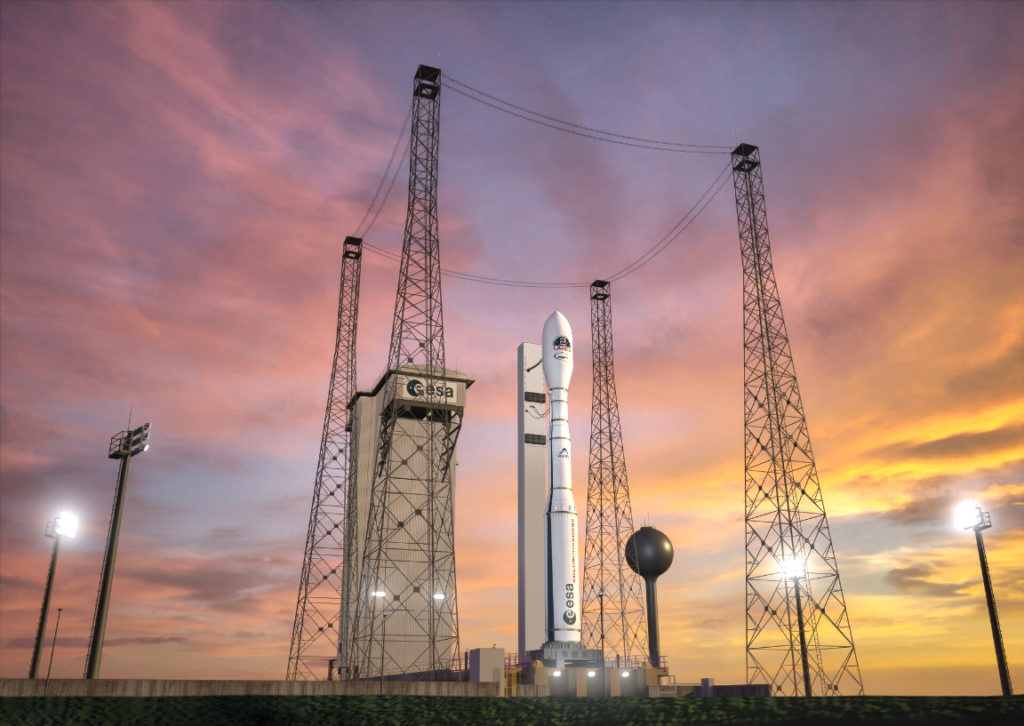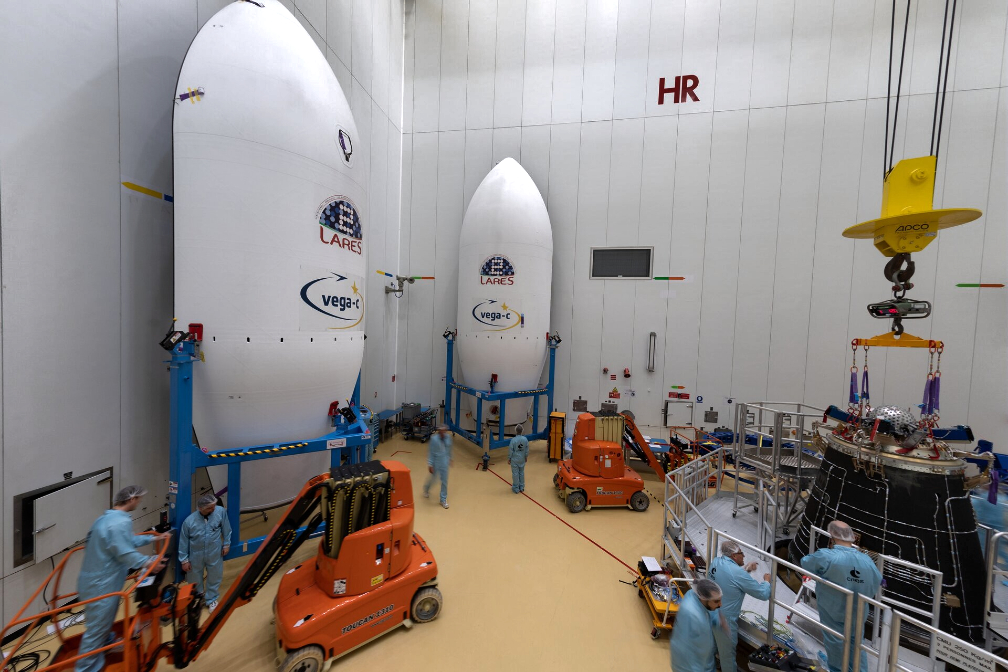
On Wednesday, July 13th, the new, medium-lift, European Vega-C rocket lifted off from the European spaceport in Kourou for its inaugural flight.

The rocket launched the “LARES 2” Laser Relativity satellite, built by OHB Italia for the Italian space agency [ASI]. The spherical satellite enables research into geodynamics and general relativity.

The top of the Vega-C rocket, the payload fairing, has a new design. “The fairing is larger than the fairing of the Vega rocket and can accommodate an additional payload mass of 800 kilograms,” explained Holger Wentscher, Senior Vice President, Launchers, at Beyond Gravity. “Additionally, our fairing includes state-of-the-art technologies that make it more versatile than its predecessor.”

This also results in reduced launch costs per kilogram. The ogive-shaped fairing at the top of Vega-C protects the satellites from thermal, acoustic, and aerodynamic environment at launch and on the ascent to space. The 9-meter-high fairing with a diameter of 3.3 meter was produced at Beyond Gravity’s site in Emmen, Switzerland. The fairing is made of carbon fiber-polymer composite and ‘cured’ in an industrial oven. Every single payload fairing for any European rocket comes from Beyond Gravity and is being produced in Emmen.
Vega-C can be used for one, two or more payloads (satellites) per launch. To place a larger single satellite into space, Vega-C uses a payload adapter system called “Vampire” from Beyond Gravity. “We have developed a new design for this adapter, which makes it possible to utilize the maximum performance of the Vega-C launcher. Our adapter makes sure, that the satellite is safely placed into orbit with highest precision,” said Wentscher.
All payload adapters and separations system from Beyond Gravity are produced at that firm’s site in Linköping, Sweden. The “Vampire” adapter will be used for single large payloads and can be used in combination with smaller payloads on the SSMS (Small Spacecraft Mission Service) multiple payload dispenser.
During flight, the Vega-C launcher is controlled by an onboard computer (“brain”) from Beyond Gravity. “We have developed a new and improved version of our onboard computer, which is smaller, lighter, and more cost efficient,” said Holger. The launcher onboard computer is being built at Beyond Gravity’s site in Gothenburg. Beyond Gravity also provided all computers for the Vega rockets.
“The first flight of a new rocket is always a very special moment. We have delivered mission-critical products to the rocket with our payload fairing, our payload adapter system and the launcher’s onboard computer,” said André Wall, CEO Beyond Gravity. “Each product is customized for this new rocket and has new, enhanced features.”
Vega-C is a four stages rocket about 35 meters high with a mass at liftoff of 210 tons. It is able to place about 2,200 kg. in a reference 700 km. polar orbit. This will meet the needs of institutions and industry in Europe and worldwide. Using a range of payload carriers, Vega-C will be able to accommodate cargo of different shapes and sizes ranging from multiple smallsats as small as one kilogram up to a single large payload. After the inaugural flight onward, Vega C will be operated by Arianespace, which also ensures the commercialization and launch schedule management of the launcher.

